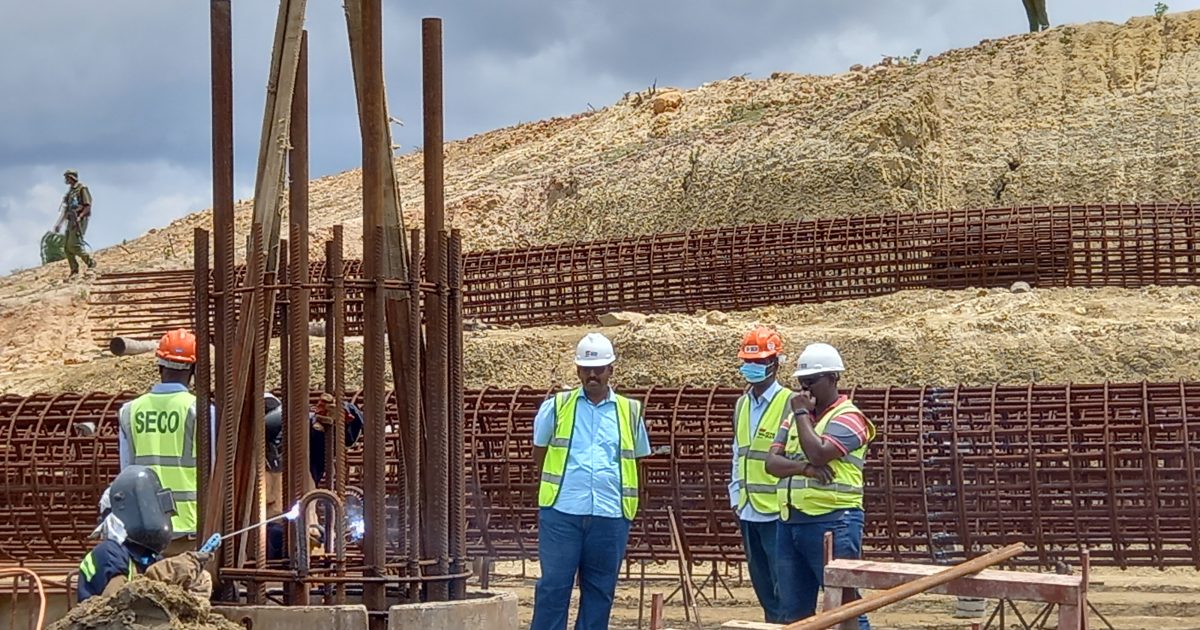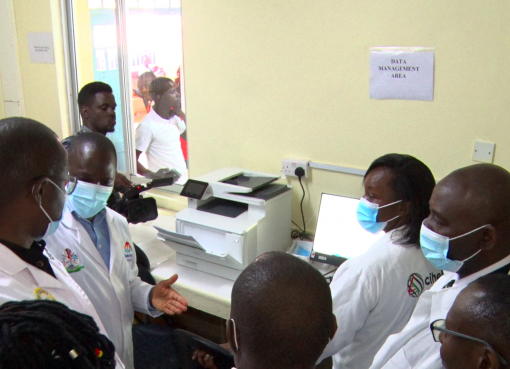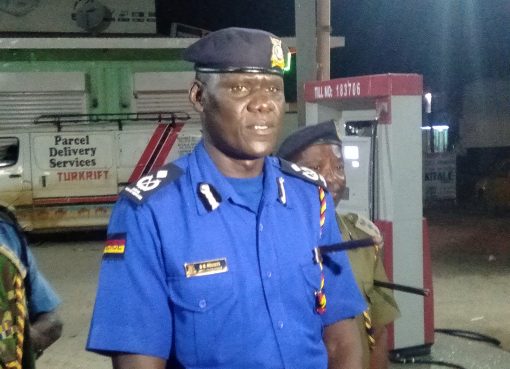The face of Kwale County is slowly transforming, the economy is gaining momentum and the living standards of residents are improving thanks to major infrastructure expansion in the region.
All these are the upshots of the major roads’ projects initiated by the national government since the inception of devolution in 2013.
Collectively, the coastal county has benefited from over six major game-changing road projects costing the taxpayer over Sh33.2 billion.
Some of the completed projects include, Samburu- Kinango Road at a cost of Sh2 billion, Shimoni-Lunga Lunga -Vanga road at Sh3.2 billion, Kanana -Shimoni road at Sh3.2 billion and Mililani -Shimba Hills road at Sh3 billion.
The ongoing projects which are expected to be completed between the years 2022 and 2024 include the Sh22 billion master class Dongo Kundu bypass and the Kinango- Kwale road which will cost the government Sh3 billion.
In 2015, the government brought to life the Dongo Kundu bypass dream that has been ringing in the minds of Kwale residents for close to five years.
According to Kwale Governor Salim Mvurya, the coastal county’s economy was being stifled by the poor road networks between Mombasa Island and Lunga Lunga town at the border of Kenya and Tanzania.
Governor Mvurya said the road construction projects being witnessed in the coastal county will re-vamp the transport system and open up the region to world class tourism.
“In fact the economic prospects of Kwale are expected to grow further with the infrastructure projects underway,” said the county boss during an interview.
Kwale has most tourist attraction sites in the coastal region including the magnificent Wasini Island, Funzi Island, Shimoni Caves, Shimoni Island, White sandy beaches, Shimba Hills National Reserve, Mwaluganje Elephant Sanctuary among other attraction sites.
According to the governor, the Likoni ferry channel which has been the only way through Kwale from the coastal city of Mombasa, has hampered development thus locking out investors.
“We hope that once all these projects are complete, we shall experience fast transportation of goods to our county. We have lost many investment opportunities following the difficulties and delays encountered while crossing the Likoni -Ferry channel but soon we shall be on the safe side and our tourism sector will thrive,” Mvurya said.
The construction work of the multibillion-shilling phase two of the Dongo Kundu bypass is almost complete with residents ripping heavily from the numerous employment opportunities in the construction sector.
The highway also known as the Mombasa Southern Bypass will connect three main transport corridors of the Mombasa-Nairobi highway, Mombasa-Malindi highway, and the Mombasa- Lunga Lunga highway.
Mvurya added that such progress will make the county a key contributor to the growth of the country’s economy which is supported by infrastructures such as roads and electricity connections.
“This is the time we shall be ranked among the top contributors to the country’s economy. The county has some of the best tourist hotels across the globe and other tourist attraction sites such as Shimba Hills National Reserve and Mwaluganje Elephant Sanctuary. All these will generate substantive revenues,” Mvurya noted.
Dongo Kundu phase one of the bypass completed at a cost of Sh39 billion was opened in 2018 and runs from Mombasa Port’s second container terminal and joins the Mombasa-Nairobi highway at Bonje, near Mazeras trading centre.
Phase two is expected to offer along with a lasting solution to the notorious congestion at the Likoni Ferry, which is blamed for the slow economic activities and growth of the south coast region of Kwale.
According to the Kenya National Highways Authority (KeNHA) Coast Regional Director, Eng Eric Wambua, the ongoing road projects worth billions of shillings that straddle Kwale are aimed at facilitating the easy movement of goods, services, and people to the south coast region.
Eng Wambua who expressed the government’s commitment in improving the country’s infrastructure said the focus of KeNHA is centered on developing the transport infrastructure to reduce traffic and improve vehicular movement.
He said KeNHA is undertaking several road infrastructure projects in the coastal region to improve transportation and also boost local economic activities.
The 18 km long bypass is taking shape as the China Civil Engineering Construction Corporation (CCECC), is racing against time to complete the mega project slated to be completed by 2024.
Construction of the road commenced in earnest in March 2020 against a backdrop of the Covid-19 uncertainties.
The Dongo Kundu dual carriageway project, expected to cost Sh22 billion, involves the construction of an interchange at the Likoni-Lunga Lunga highway and the erection of two bridges one at Mwache – spanning 660 meters, and another at Mteza straddling 1,440 meters.
China-Based Construction Corporation says it has already covered 80 percent of the work with the road expected to be unveiled in the months ahead.
The bypass, whose first phase of Sh11 billion was completed in 2018, includes the construction of a series of roads and bridges, and viaducts (a long bridge-like structure) linking Mombasa West to the South Coast in Kwale.
The third phase includes the construction of a six-kilometer (6km) stretch of tarmac road, from the Mteza Bridge to the Likoni -Lunga Lunga highway in the Ngombeni area of Mombasa.
In addition, Kwale has benefited from the Lunga Lunga-Vanga, Mililani -Shimba Hills, Kanana -Shimoni roads which have opened the county to the borders of the Republic of Tanzania.
The over 70 kilometers Lunga Lunga-Vanga-Kanana-Shimoni stretch is facilitating business operations, aiding the movement of goods, people and services from Tanzania to the city of Mombasa.
Further, the road project has stabilised the fishing industry at Shimoni fishing hub by offering an elaborate transport system to fish folks as they transport fish in Mombasa and Taita Taveta counties.
Governor Mvurya said the Samburu-Kinango -Kwale road will boost the movement of tourists from Tsavo National Park in Taita Taveta to the national reserves in Kwale.
“The Likoni Ferry channels are a challenge to us. Tourists are delayed from reaching our attraction sites on time. But the new road, which is half complete, will be serving as the shortest and fastest route to the park,’’Mvurya said.
The Samburu-Kwale Road project which has a total length of 80 km was launched in 2018 in two phases.
The first phase which is around 50 kilometers runs from Samburu Township -to Kinango Sub County.
The project which cost Sh2 billion was completed in 2022, and already residents are benefiting from the project which has linked up Kinango Sub-County to Voi Town in Taita Taveta County.
The historic road is one of its kind since it served as the first tarmac road in the interior of Kinango Sub County since independence.
The second phase of the 30 km Kinango-Kwale Road is to be constructed at Sh3 billion.
The construction work commenced in late 2021 and is likely to be completed in 2024.
The road offers an option to passengers who would wish to access Diani town through Kinango town without necessarily using the Likoni Ferry channel.
Those visiting Kwale in the past have been forced to rely on the Mombasa-Nairobi highway, going through Kibarani, Likoni ferry to Diani, where they experience frequent traffic jams which cause delays.
In 2013, the National Government embarked on increasing road connections across the county.
The government is edging the completion of the 11,000 kilometers of roads countrywide after surpassing what it had promised nine years ago to tarmac 10,000 km of roads.
These will nearly double the number of tarmacked roads from 14, 00 kilometers when jubilee came to power almost a decade ago.
Kenya had 11,230 kilometers of bitumen roads in 2013, according to the data in the 2014 Statistical Abstract Published by the Kenya National Bureau of Statistics.
The government constructed 3,000 kilometers of roads between 2013 and 2017 and over 7,000 kilometers between 2017 and 2022.
Kwale County has benefited from close to 200 kilometers of tarmac roads from the government agenda of improving transport and infrastructure dubbed as ‘the 21st-century transport and infrastructure system.’
By Raymond Zaka and Hussein Abdullahi





